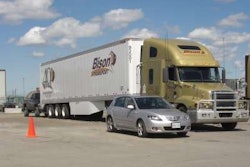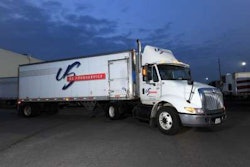This year marks 50 years since Volvo introduced the three-point safety belt – an invention that has saved more lives in traffic than any other technical feature. “We immediately gave free use of our patent to all manufacturers, and today the safety belt is a natural feature in virtually all trucks and cars,” says Carl Johan Almqvist, Volvo Trucks’ traffic and product safety director. “That is why we can say that there is a bit of Volvo in every vehicle on the road – irrespective of make and model.”
However, although the three-point belt has been around for half a century, its use remains worryingly low among truck drivers in some countries. On Swedish roads, only four out of 10 truck drivers use the belt, while France, owing to tough legislation, has boosted safety belt use to 80 percent. The consequences of not using the belt are well documented in Volvo Trucks’ own accident research; of 15 truck driver fatalities on Swedish roads over the past three years, only one was wearing a safety belt.
“The human being does not have a built-in speedometer, so we do not perceive speed as dangerous, especially not when we sit high up in a large vehicle,” Almqvist says. “In a global perspective, every year a large number of drivers die while not wearing a safety belt, and their lives might have been saved by the truck’s most obvious safety feature. This is something we must rectify, a challenge that is as big as the development of new technologies for accident avoidance.”
The world’s first vehicle with a three-point safety belt as standard – a Volvo PV544 – was delivered in Karlstad, Sweden, on Aug. 13, 1959. “We have safety belt reminders in our trucks, but ultimately it is the drivers themselves who must realize the risks they are taking when they drive without wearing the safety belt,” Almqvist says. “Virtually our entire systematic safety approach is bypassed if the belt is not given the chance to hold the seat occupant securely in place during an accident. This applies equally if the driver is thrown around inside the cab or is thrown out of the cab if the truck rolls over.”










